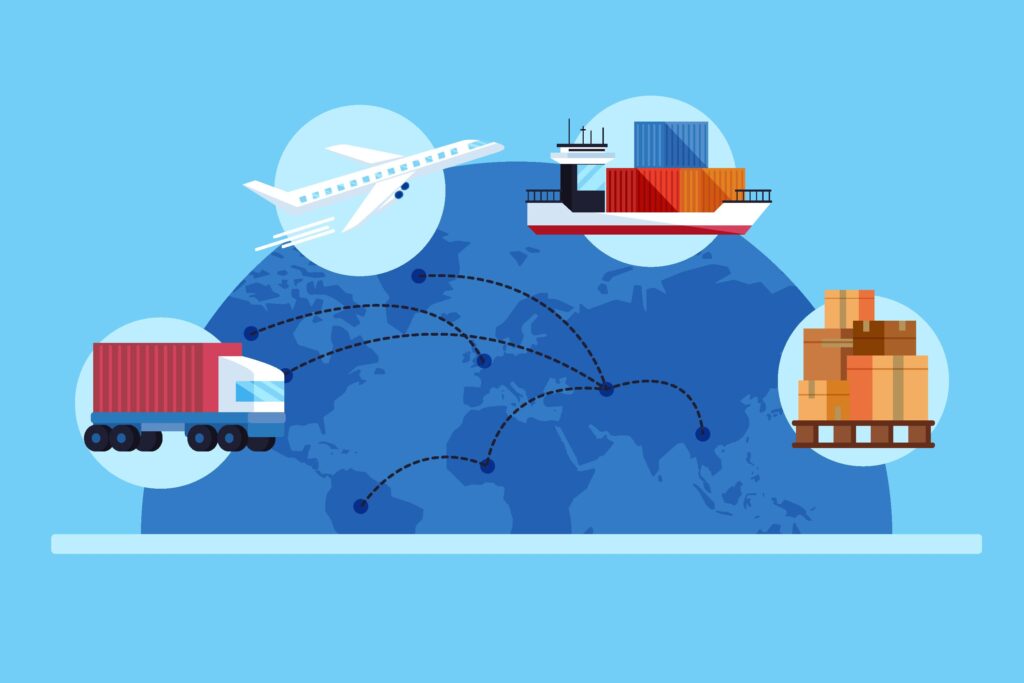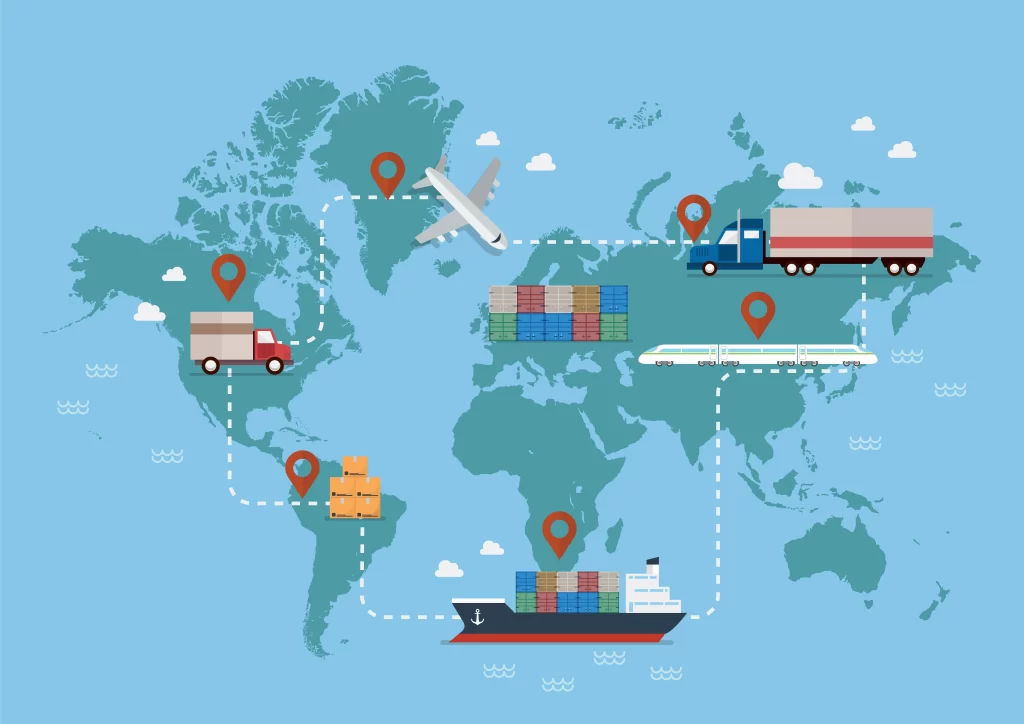In the current global logistics and trade landscape, the need for quick, reliable, cost-effective, and secure transportation is more important than ever before. Businesses are constantly looking for new and creative ways to move goods from one place to another. Multimodal transportation is one approach that has drawn a lot of interest. What does it mean? What is the process? What are its advantages and pitfalls? This blog will provide answers to any questions you may have in a straightforward manner.
What Is Multimodal Transport?
Multimodal transportation is the transportation of goods by two or more methods of transportation, such as rail, road, sea or air, under the same contract or with a single operator. The entire process of shipping is controlled by a single logistics service provider regardless of the various types of transportation are involved.
For instance, a shipment could begin its journey on truck, then be moved to a vessel, later on by train, getting to the final destination. The client doesn’t have to handle each step individually because the multimodal company manages the entire journey.

How Does Multimodal Transport Work?
The main actor within this framework is called the Multimodal Transport Operator (MTO). The MTO is accountable for the cargo from its beginning point until the destination. The client signs one contract with the MTO and then manages the various transportation methods and carriers.
Here’s an easy step-by-step tutorial:
- A truck picks up the items from the warehouse.
- They are taken to the port, where they are transferred to a cargo ship.
- When they reach the port of departure at the port of destination, they are unloaded and put onto trains.
- Then, they are transported by a different truck to the client.
In this process throughout the journey, the MTO ensures that everything is monitored and efficiently managed and efficiently, which saves the customer time and effort.
Key Benefits of Multimodal Transport
Multiple-Mode Transport has numerous benefits for companies seeking to simplify their logistics processes
1. One Point of Contact
With just one contract and a single logistics service, Communication becomes easy. It’s not necessary to work with a variety of companies or track updates from multiple providers.
2. Time-Saving
Multimodal systems are typically created to make use of the most efficient and fastest routes. This reduces delivery times, particularly for long-distance and international transport.
3. Cost-Effective
Utilizing the most efficient method for each stage of your journey could reduce costs. For example, shipping by sea is less expensive for long distances, and trucks are more suitable for shorter final deliveries.
4. Better Tracking and Visibility
Many MTOs have advanced tracking solutions, which provide constant updates throughout the trip. This allows businesses to plan more efficiently and keep their customers updated.
5. Eco-Friendly
Utilizing efficient transport modes can help reduce emissions and consumption of fuel which makes it a more sustainable option.
Challenges of Multimodal Transport
Although multimodal transport comes with many advantages, it presents some challenges companies must consider:
1. Coordination Complexity
Although one person is in charge of the whole process, managing various modes of transport requires high levels of coordination. A delay in one part can impact the delivery schedule.
2. Infrastructure Limitations
A few areas may not have the infrastructure or connections between various transport systems, which makes seamless transitions a challenge.
3. High Initial Setup Costs
The process of planning and establishing an intermodal logistics system can take more time, effort and money than using only one method.
4. Regulatory Issues
International travel may involve documentation, customs clearance and regulations that are different between different countries. The MTO should be skilled in navigating these issues efficiently.
5. Risk of Damage or Delay
Transferring cargo between different methods increases the risk of handling mistakes or even damage when not handled properly.
Multimodal vs. Intermodal Transport
It’s crucial to comprehend the distinction of the two modes of transport: multimodal or intermodal transportation.
- Multiple-Mode Transport utilizes one contract and operator for the entire trip.
- For each mode of transportation, there are several contracts with different transporters.
Multimodal can be simpler to manage since the customer is only dealing with one service provider. Intermodal can offer greater flexibility, but it can also be more complicated to organize.
Who Can Benefit From Multiple-Mode Transport?
Multimodal transport is great for:
- Manufacturing businesses require the ability to move products across borders.
- Retailers and businesses want efficient and quick delivery.
- Importers and exporters who manage bulk shipments.
- Management of the supply chain is seeking to cut down on the amount of time and cost.
It doesn’t matter if it’s a small company or a huge enterprise; any business that is involved in regular cargo movements is able to benefit from this program.

Conclusion
Multimodal travel is a clever and contemporary solution to the ever-changing logistics requirements of today. It streamlines the entire process by utilizing one operator for various transport modes, thus reducing the effort and error. Although it does have some limitations like coordination and infrastructure requirements but the overall benefits, such as savings in costs, quicker delivery, and improved control, make it an attractive choice.
It is crucial for businesses that operate in global marketplaces, particularly in the UAE’s trade hubs, to choose the best logistics provider. If you’re in search of an experienced cargo service in Dubai, be sure you select a service that has experience in multimodal transportation. This will help you simplify your shipping process to reduce costs, as well as enhance the satisfaction of your customers

